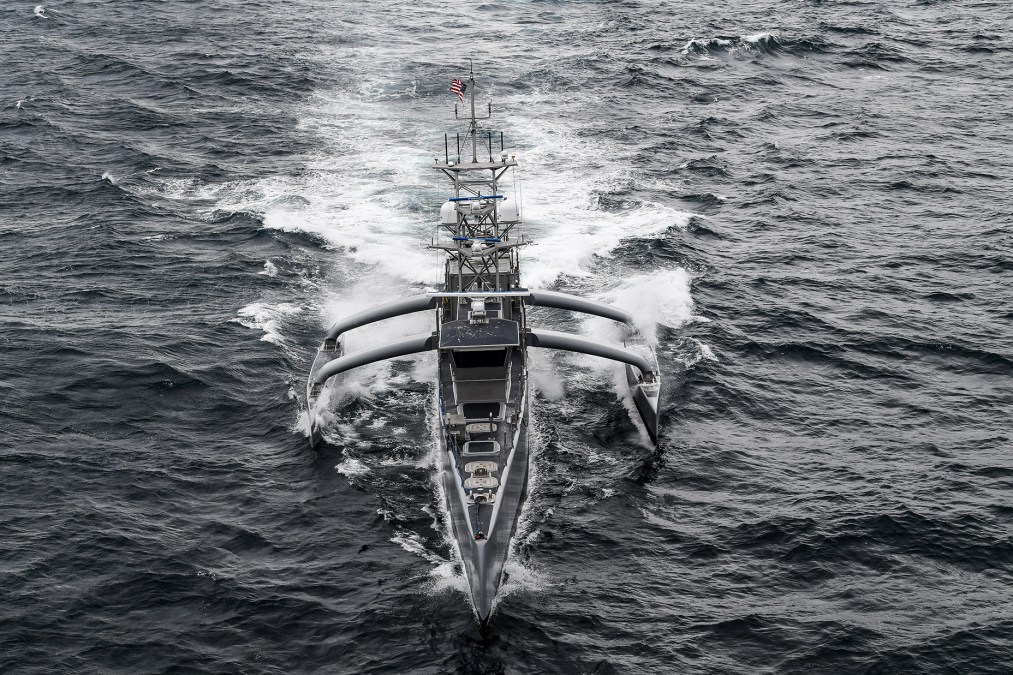Navy not accounting for full costs of uncrewed systems, GAO warns

The Navy’s efforts to develop and fund uncrewed vehicles have been disjointed and haven’t completely accounted for all the costs or resources it will need, a new report from the Government Accountability Office finds.
To meet future requirements, the Navy believes it must build a series of uncrewed surface and subsurface vessels. While its shipbuilding plan outlines spending over $4 billion on such systems over five years, it does not account for full costs to develop and operate those systems, GAO said.
Furthermore, the Navy has not established criteria to evaluate prototypes or develop improved schedules for prototype efforts, the watchdog said its report released Thursday titled “Uncrewed Maritime Systems: Navy Should Improve Its Approach to Maximize Early Investments.”
If the sea service continues with its current approach, it is less likely to achieve its objectives for fielding these systems, the study warned.
The Navy’s December 2020 shipbuilding plan underestimates the resources needed to acquire uncrewed vehicles, specifically for operations and sustainment and the digital infrastructure needed to support them.
Digital infrastructure to support the vehicles’ ability to function without humans onboard requires significantly larger software investment than typical shipbuilding programs. This infrastructure is still under development, a senior Navy official told GAO, and the costs remain unknown, though it is estimated they’ll be in the billions of dollars.
That estimate was not included in the December 2020 shipbuilding plans.
While the Navy highlights affordability as a key reason for developing these uncrewed systems, without a rough cost estimate covering the full scope, such affordability cannot be certain.
“A cost estimate, beginning with rough order costs that is refined over time, forms the basis for establishing and defending informed investment decisions and is integral to determining and communicating a realistic view of likely cost and schedule outcomes,” GAO said.
It continued: “By highlighting the affordability of these systems without analysis that accounts for all estimated costs, the Navy could potentially communicate unrealistic cost estimates and expectations for its uncrewed maritime systems. If uncrewed maritime systems turn out to be more expensive than anticipated, the Navy may not be able to buy as many ships — whether crewed or uncrewed — as currently planned, which could jeopardize its future force plans.”
GAO issued seven recommendations, and the Navy concurred with all of them. They include a cost estimate that includes the full scope of known costs to operate uncrewed systems, establishing an uncrewed maritime systems portfolio, and details about how to achieve the Navy’s uncrewed maritime system strategic objectives.
Recommendations also include: developing evaluation criteria for assessing each uncrewed prototype effort’s readiness to transition to an acquisition program; a master planning schedule to include each uncrewed maritime system effort; revision of the prototyping plans for each uncrewed maritime system to incorporate how the Navy plans to use its prototyping efforts to mature technologies to achieve top level requirements; and revisions for prototyping plans for each uncrewed maritime system to incorporate how the Navy plans to use information gained from prototyping to develop certifications that apply to uncrewed maritime systems prior to investment decisions.
GAO noted that it interprets the Navy’s responses to its recommendations as suggesting that the service will not provide a cost estimate of full costs for uncrewed systems in future shipbuilding plans.






